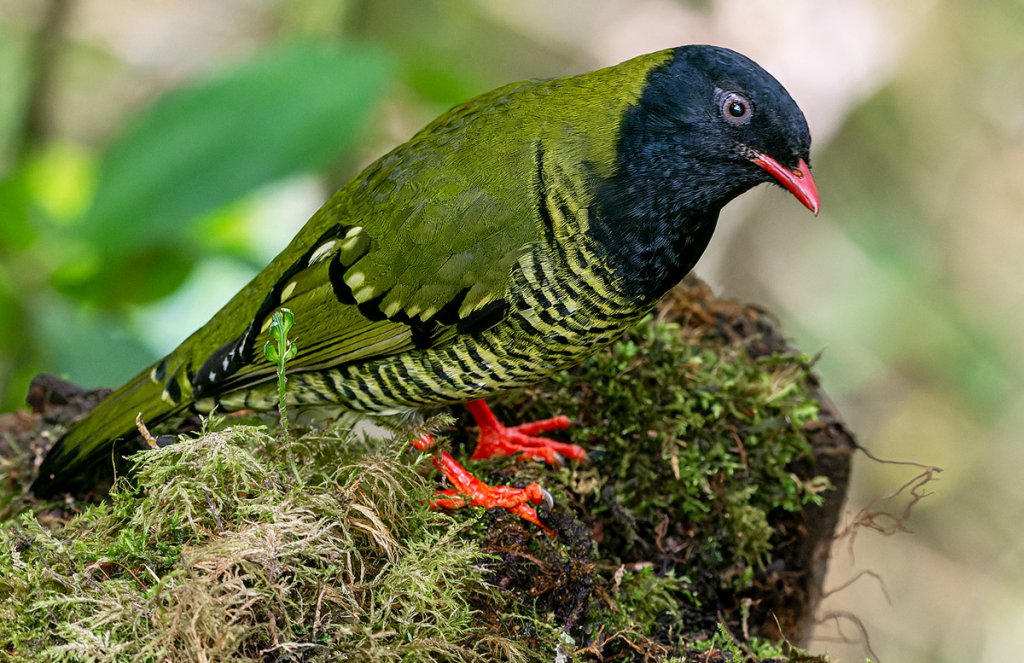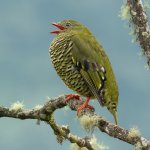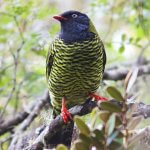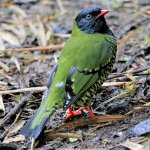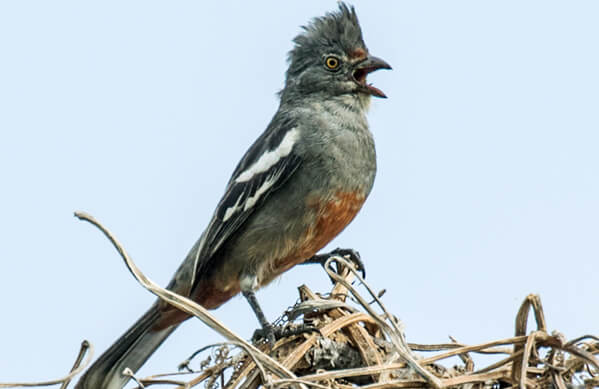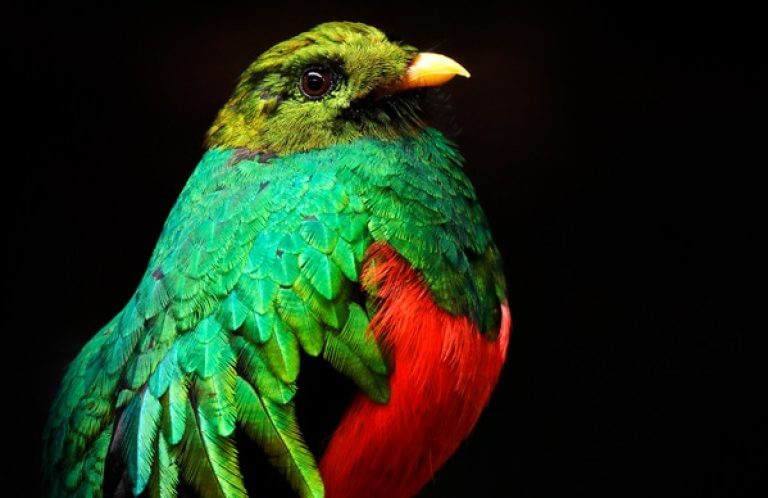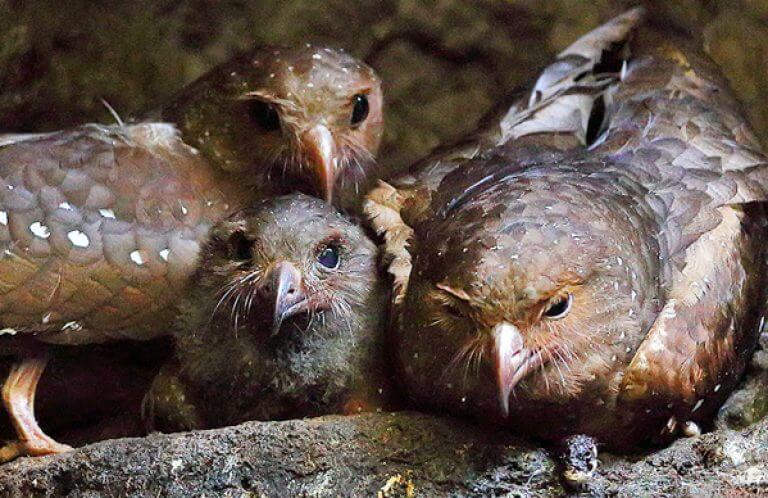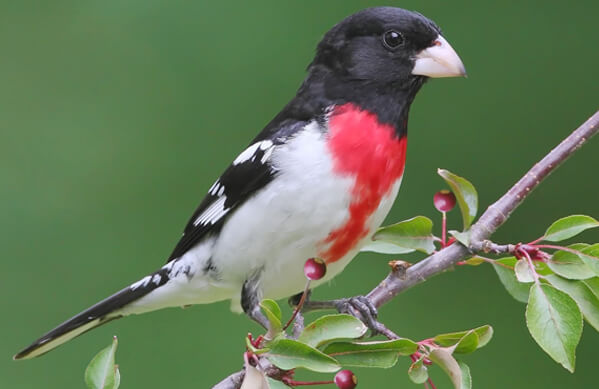About the Barred Fruiteater
The Barred Fruiteater is the largest representative of the genus Pipreola, a group of slow-moving, rather chunky Neotropical birds known as Fruiteaters. These birds belong to a larger, highly variable family which includes species such as the Andean Cock-of-the-Rock, Peruvian Plantcutter, and Banded Cotinga.
True to its name, both sexes of Barred Fruiteater have barred black-and-yellow underparts, as well as bright coral-colored legs and beaks, black-tipped tails, and yellow spotted wings. But male and female Barred Fruiteaters can easily be told apart, as the male has a coal-black head and throat.
This species has a wide distribution up and down the Andes; however, it's fairly simple to determine which part of its range a Barred Fruiteater calls home.
The Eyes Have It
The Barred Fruiteater occurs in two subspecies across its wide range. The two are easy to distinguish, as individuals at the northern end of the range have reddish-orange eyes, while those at the southern end have pale yellow eyes.
Songs and Sounds
Vocalizations of the Barred Fruiteater include incredibly high-pitched, almost inaudible songs and calls.
Song:
Calls and song:
Breeding and Feeding
Much remains to be discovered about Barred Fruiteater breeding biology. This beautiful but cryptic species spends most of its time in the mid to upper tree canopy, where its quiet calls and green and barred plumage make it difficult to detect. When spotted, it's usually seen singly or in pairs.
Related fruit-eater species have been observed to be monogamous, with both sexes building the cup-shaped nest and helping feed the chicks.
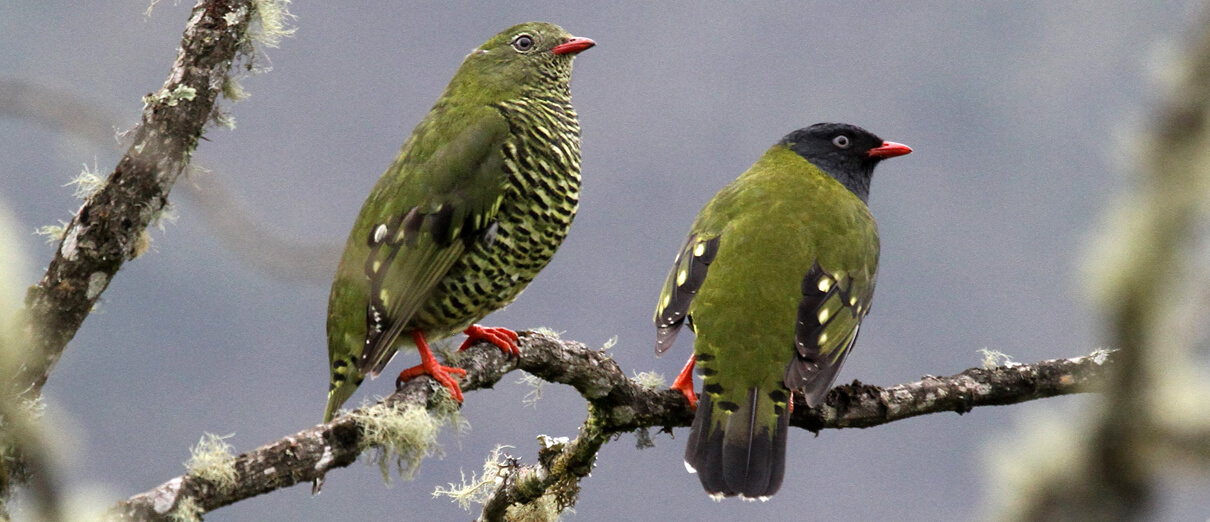
True to its name, the Barred Fruiteater feeds exclusively on fruit, which it plucks from the mid to upper-level foliage while perched. Many other Neotropical bird species, such as Resplendent and Golden-headed Quetzals, Oilbird, and Keel-billed Toucan, are partially or entirely frugivorous.
Region and Range
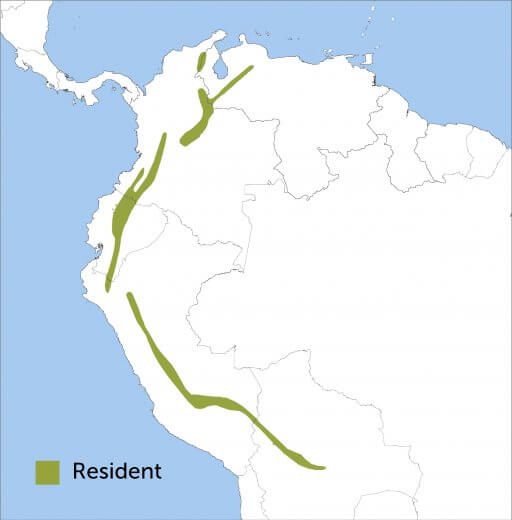
The Barred Fruiteater's extensive range extends from Venezuela, Colombia and Ecuador south to Peru and Bolivia. It occurs in higher-altitude forests than other fruiteaters, ranging from 7,400 to over 10,000 feet.
Conservation
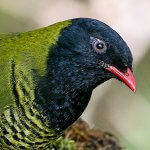
Help support ABC's conservation mission!
ABC's reserve network includes at least ten reserves where the Barred Fruiteater can be found. One is Colombia's El Dorado Bird Reserve, created in 2010 by Colombian partner Fundación ProAves with support from ABC. This reserve also protects endemic species such as the rare Santa Marta Parakeet and provides an important wintering habitat for migratory species such as the Cerulean Warbler and Rose-breasted Grosbeak.
Other reserves supported by ABC where birders may spot this cryptic fruiteater species include Fundación de Conservación Jocotoco's Tapichalaca and Yanacocha Reserves in Ecuador and Asociación de Ecosistemas Andinos' Abra Patricia Reserve in Peru.
Get Involved
Many of the rarest bird species in the Western Hemisphere remain relatively unknown. You can learn more about these birds and the threats they face by signing up for ABC's Bird of the Week email series, which frequently highlights these fascinating birds.
American Bird Conservancy and our partners throughout Latin America and the Caribbean have created and expanded more than 100 bird reserves, which protect upward of 1.1 million acres of vital habitat. Together, we've planted more than 6.8 million trees, helping to restore degraded and damaged habitat. You can help us continue to protect endangered birds by making a gift today.





































